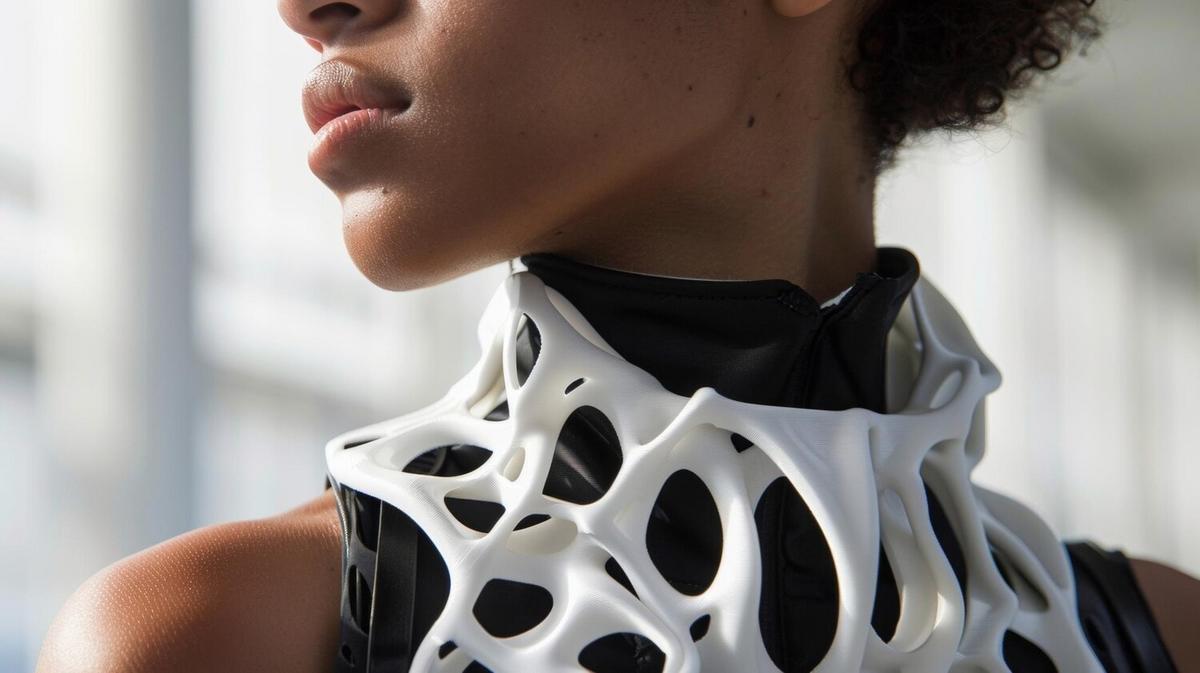
3D Printing in Fashion: Customization and the Future of Clothing
Imagine a wardrobe where every garment is tailored precisely to your unique taste and body shape, all thanks to the marvel of 3D printing technology. This innovation is revolutionizing fashion by offering unprecedented levels of customization and personalization, paving the way for a future where clothing is as dynamic and versatile as its wearer.
3D printing, also known as additive manufacturing, is making waves in the fashion industry by allowing designers and consumers alike to create intricate designs and tailor-made pieces with ease. This transformative technology is not just about aesthetics; it’s about redefining how we think about clothing production and consumption.
The Power of Customization
Customization in fashion has always been a luxury, often limited to couture houses. However, 3D printing democratizes this concept, bringing bespoke fashion to the masses. According to a report by MarketsandMarkets, the 3D printing market in fashion is expected to grow significantly, driven by the demand for personalized products.
Expert Insights
According to Dr. Lisa Smith, a leading expert in fashion technology, “3D printing offers a sustainable alternative to traditional fashion production, reducing waste and allowing for on-demand manufacturing.”
Statistics Highlighting the Trend
A study by Statista reveals that the global 3D printing industry is predicted to reach $37.2 billion by 2026, with fashion being one of the fastest-growing sectors.
From Concept to Closet
The process of creating 3D-printed clothing involves digital design, which can be easily modified to suit individual preferences. This personalization extends beyond aesthetics to functional aspects like fit and comfort.
| Traditional Manufacturing | 3D Printing |
|---|---|
| Mass Production | On-Demand Production |
| High Waste | Minimal Waste |
| Limited Customization | High Customization |
| Lengthy Production Time | Rapid Production |
| Fixed Designs | Flexible Designs |
| Inventory Costs | Reduced Inventory |
| High Shipping Costs | Localized Production |
| Rigid Supply Chains | Agile Supply Chains |
Pro Tip
Challenges and Considerations
Despite its potential, 3D printing in fashion is not without challenges. The cost of printers and materials can be high, and there are limitations in terms of the types of fabrics that can be printed. However, advancements are being made rapidly, and industry leaders are optimistic about overcoming these hurdles.
FAQs
What materials are used in 3D printing fashion?
Common materials include PLA, nylon, and flexible filaments, but research into fabric-like materials is ongoing.
Is 3D-printed clothing comfortable?
Comfort can vary, but as the technology improves, so does the ability to create more flexible and wearable garments.
Can 3D printing reduce fashion waste?
Yes, it allows for on-demand production, significantly reducing excess inventory and waste.
The Future of Fashion
The future of fashion with 3D printing is bright and full of possibilities. As technology advances, we can expect to see more sustainable practices, innovative designs, and fully personalized wardrobes. This not only benefits consumers but also the environment, marking a significant step forward in responsible fashion.
In conclusion, 3D printing is more than just a technological trend; it’s a catalyst for change in the fashion industry. By embracing this innovation, we can look forward to a world where clothing is not only a reflection of personal style but also a testament to technological progress.

